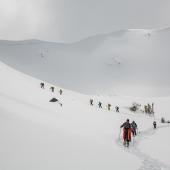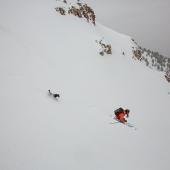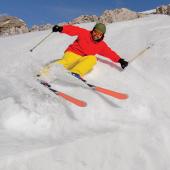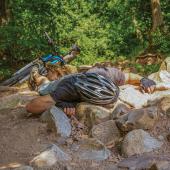All Systems Go
Tips for an injury-free ski season.
As we transition from stalking game to pursuing powder turns, it’s important to keep safety in mind so you can keep getting those turns all season long. Due to improved equipment and increased public awareness from social-media outlets, backcountry skiing and splitboarding have seen tremendous growth in the past few years. Unfortunately, while backcountry skiing has grown, so have its associated injuries.
These injuries can be divided into three categories: uphill (overuse), downhill (traumatic), and environmental, each with its own unique setbacks and prevention/recovery protocols. Regardless of the type of injury, diligent preparation and daily rehab go a long way toward avoiding getting hurt in the first place. Let’s take a closer look.
Overuse on the Up
Touring involves different movements than most non-snow-related activities like trail running, biking, and paddling. Unless you’ve spent the season roller skiing, the transition from fall to winter can take a toll. Touring-related injuries are overuse injuries, meaning they result from repeated overload that stresses the body beyond its capacity to recover. In splitboarding and backcountry skiing, this typically means hip or lower-back pain. These nagging injuries can be prevented by improving your mobility, strength, and skinning technique. Improve your technique by (1) focusing on gliding your leg forward rather than lifting and stepping, (2) keeping your chest up and pole-planting close to your foot to avoid bending forward, and (3) setting a good track to avoid spending too much time on your risers. Improve your strength and mobility by routinely stretching your hips and strengthening your posterior chain (back extensors, glutes, and hamstrings).
The old saying, “plan the work and work the plan,” sounds ideal, but it’s not usually how it goes. Trust me, we understand. If you’re eager to prepare and want to be ready to jump right into winter activities, a good transition plan consists of some key elements. First, the mobility and flexibility to get your leg behind you—specifically in the anterior hip structures. Second, muscular strength and power to drive with the large muscles of your posterior chain (glutes and hamstrings). Inversely, on the way down, we rely more on the strength, power, and endurance of the anterior thigh muscles (quads) for keeping edges in the steep chutes and driving skis through knee-deep snow. Third, stability and control through the trunk and entire lower leg chain for both the up and the down. This ensures proper power transfer on each glide while minimizing adverse forces and stress on the lower back and knees, in both powder and variable snow conditions. By incorporating the above suggestions, you not only will decrease your risk of injury, but also improve your performance.
Traumatic on the Down
The vast majority of backcountry skiing and splitboarding injuries are traumatic and occur on the way down. These injuries are really no different than those that happen at the resort—skiing fast, catching air, and getting out of control are ingredients for big crashes. According to a recent study (Mueller et al, 2019), the majority of these traumatic injuries occur to the knee and the hand. “Skier’s thumb” occurs when you fall onto your hand with your pole still in your grip; this can cause the ulnar collateral ligament of your thumb to tear. This may sound like a unique and rare incident, but it accounts for almost all skiing-related hand injuries. Avoid this by skiing without straps (just don’t drop your poles).
Knee injuries are the most common backcountry-skiing-related injury, most of which involve the ACL. If you haven’t done so yourself, you probably know someone who’s blown a knee on the slopes. And more often than not, tearing an ACL will end your season. Overall, they’re less common in snowboarding, but at the expert level, they happen at the same rate. The most effective way to prevent ACL injuries is to develop strength and resilience in muscles like your quads and hamstrings. With exercises such as the squat, when heavy weights are used, good form is critical to ensure proper muscle development.
Inflicted by the Environment
Even a healthy, well-trained body isn’t always enough, as Mother Nature is known to throw curveballs of her own. Environmental injuries come from exactly where you’d think: the weather and terrain you tour in. Be it hypothermia, frostbite, sunburn, or trauma from an avalanche, you may face sobering setbacks. All of these injuries can be greatly mitigated through proper planning, clear communication among partners, and awareness of the conditions you’ll be in.
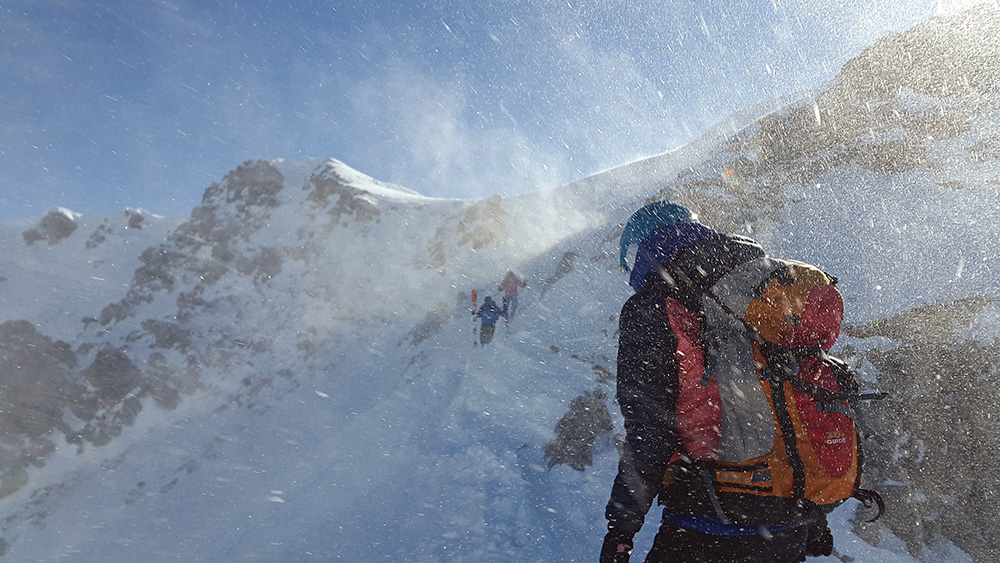
Decrease the likelihood of silly mistakes and stave off the risk of serious consequences while in the mountains with these simple tips: (1) Plan, plan, plan. Study the route, know the terrain, assess the angles and risk factors. Think about what could go wrong and run through hypothetical scenarios. (2) Prepare. Recheck your pack for appropriate gear, food, and water. Check the weather, snowpack, and avalanche forecast, and make sure your group has done the same. (3) Be aware of the human element in decision-making. Talk openly with your partners, be flexible with objectives, and reflect on the day when it’s finished.
All-Purpose Prevention
While key physical components and skills are an excellent foundation, we need to remember that our bodies succumb to not only physical, but psychological stress during our outdoor pursuits. Which is why a holistic approach to staying active and fit is essential to keeping yourself injury-free. Your best shot at chasing late-spring corn deep in the backcountry comes with adequate nutrition, sleep, and recovery.

Some rules of thumb to live by: (1) Hydrate or die. Even though it’s cold out, our bodies continually require water for energy and temperature control. (2) Eat early and often. If you start eating after you’re already hungry, it’s probably too late. Begin snacking within the first hour of your tour, and pack enough food to make sure you can stay out twice as long as you expect. (3) Get enough sleep. This includes the days leading up to the tour as well as the days following. Inadequate sleep can impair your physical readiness, mental fortitude, and will simply make for a less enjoyable day. (4) Rest. The only training you benefit from is the training you’re recovering from. This includes nutritionally refueling, getting quality sleep the nights following a big effort, and also making sure you’re not physically overwhelming yourself day after day.
Keep a log of total time, vertical gain, and your effort for your daily activities, as well as bigger pursuits. After great efforts, plan a few less-intense outings before the next committing excursion. Monitoring these workload trends will help prevent drastic ups and downs in the season, minimizing the risk of stressing our systems physically and mentally beyond capacity. Using these principles for your outdoor adventures will help ensure that you’re staying healthy, safe, and properly preparing for longer, more involved objectives.
There’s a lot to put in play and digest, but as with all outdoor pursuits, remember to have fun, enjoy the process, and immerse yourself in a community of people who share similar passions. It shouldn’t be that hard to do; you’re in Bozeman, after all.
AJ Sobrilsky, PT, OCS and Jason Lunden, PT, SCS are physical therapists at Excel Physical Therapy. When not getting out in the mountains, they enjoy getting people back from injury and improving performance in the sports and activities they love. For ideas on how to improve your strength and mobility, check out excelptmt.com.








